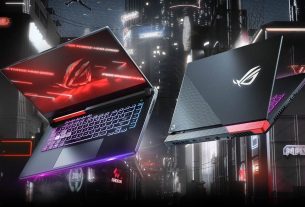Ignite the imagination. Launch creativity and Explore Opportunities.
Temple University Ambler, in conjunction with Naval Surface Warfare Center, Philadelphia Division (NSWCPD), hosted an Engineering Prototype Day on April 21, 2023 to showcase the innovative, detailed projects on which senior design students have been developing. This unique outreach program to area middle and high schools, helps young students to become excited about pursuing careers in STEM.
During the program, students from Cristo Rey Philadelphia High School, George Washington Carver High School for Engineering and Science, Upper Moreland High School, and Hatboro-Horsham High School were able to get a hands-on look at the exciting research projects being conducted at Temple to include: Light Aircraft Dynamic Flight Control Simulators (LA-DFCS), space flight simulators, planetary surface explorer (aka Lunarbot) and a semi-autonomous robotic lawnmower (aka MoBot).
In addition, former National Aeronautics and Space Administration (NASA) astronaut and retired U.S. Navy Capt. Chris Ferguson, an Astronaut Hall of Fame 2022 inductee who logged 40 days, 10 hours and four minutes in space, provided a keynote address to the students.
NSWCPD has partnered with Temple to support this unique STEM outreach program in the Greater Philadelphia area as the command spearheads a broad range of educational outreach programs with the long-term goal of building a relevant and capable future STEM workforce. Developing leaders with this expertise and real-world experience requires interdisciplinary STEM education rooted in basic and applied scientific research, as well as access to the latest technology.
The champion behind this distinctive STEM project is NSWCPD Senior Acoustics Engineer Sherwood (Woody) Polter, who also serves as adjunct instructor for Temple’s College of Engineering, where he is currently involved in research and development related to computational processes for diagnostics and prognostics of machinery system condition-based health monitoring.
“The goal of the Engineering Prototype Day is to demonstrate to students visiting the university how cool engineering is and why we do what we do,” Polter said.
All of the projects during Prototype Day were geared toward school students interested in STEM education and careers. The middle and high school students talked to NSWCPD mentors and the college of engineering students from various engineering disciplines in electrical, computer, mechanical, industrial and technology, as well as observed demonstrations on projects designed for adaptability for education and curriculum development.
“We want these kids to think about why technology is important, to think about areas that involve aviation, space travel, automation and robotics. Perhaps we can flick a switch in the developing minds of future scientists and engineers. We want them to dream big and reach for the stars, to go to space, and to ‘boldly go where no man has gone before’. That’s what it is all about. The future is for their taking and we as a society need them,” Polter said.
Much like the Navy, NASA’s journeys have propelled technological breakthroughs, pushed the frontiers of scientific research and expanded our understanding of the universe (and the sea). These accomplishments, and those to come, share a common genesis: education in STEM.
“STEM is pretty awesome,” said Ferguson who piloted the Space Shuttle Atlantis on his first mission to space, STS-115, which launched on Sept. 9, 2006 and returned to Earth on Sept.21, 2006. He then commanded STS-126 aboard Space Shuttle Endeavor. In 2011, he was assigned as commander of STS-135, which was the final mission of the space shuttle program.
Ferguson explained what it is like to live on board the International Space Station, what it’s like to return to Earth, and he discussed the future of space exploration to Mars and beyond.
“Mars is a really cool place and we are learning so much – we will someday put humans on Mars. Interestingly, Mars used to be a lot like Earth. It had oceans, it was warm and had atmosphere. We are not really sure what happened to it and we don’t know if Earth will suffer the same fate. There are pretty good indications that some form of life evolved on Mars,” Ferguson said.
Ferguson detailed some of the STEM fundamentals behind space travel, specifically calculus, by referring to the Tsiolkovsky rocket equation, saying “The equation calculates how much fuel is needed to get to certain places.” (The rocket equation is a mathematical equation that describes the motion of vehicles that follow the basic principal of a rocket: a device that can apply acceleration to itself using thrust by expelling part of its mass with high velocity, which can thereby move due to the conservation of momentum.)
When asked about what it was like to return to Earth, Ferguson said, “The orbiter, which has orbited the Earth at 17,500 mph, has to slow down to 250 mph. The surface temperature of the orbiter would reach 3,000 degrees and a pink cloud would encompass the aircraft with sudden flashes of light. You couldn’t even see through the windows,” he said. “As we slow down, we save fuel by letting gravity take over.”
Ferguson was asked about his thoughts regarding robotic explorations and human involvement.
“We gotta have somebody there to plant that Flag and say ‘I came in peace for all of mankind to Mars’ – as they reach down and grab a handful of soil. Then they can return home and say ‘we did it,’” Ferguson responded as he believes that in order to put a Flag on the surface and consummate the discovery, we need to have boots on the ground.
Following the keynote address, students were assigned groups and toured the facilities for interactive hands-on demonstrations of the projects.
“We are fabricating a new space capsule instrument panel with working switches, LEDs, and gauges, matching the original Mercury 7 capsule as closely as possible. We are learning so much about design engineering,” said Walid Talib, a fourth-year mechanical engineering student, presenting on behalf of the Space Simulation project.
The Space Simulation project is designed to walk school students through the early designs of the NASA spacecraft used in the Project Mercury Program with hands on learning and history through modern spacecraft designs launched by private industry today. Engineering students have started to recreate the 1960’s version of the Friendship 7 capsule using additive manufacturing technology beginning with the instrument console so that school students can understand the spaceflight controls and instruments that John Glenn used to fly in space.
Advising this program is Mark Calhoun, Vice President of the Johnsville Centrifuge and Science Museum – a non-profit STEAM (Science, Technology, Engineering, Art and Math) organization. He is also a classroom support specialist at Temple University for the College of Engineering. In addition, Calhoun is a big supporter of the NSWCPD STEM Outreach Programs and events at the Ambler campus, aimed at getting school students involved with STEAM projects through space simulation.
“This was the first year of the program. Nobody has these things [Friendship 7 Space Capsule simulators], and eventually we will be able to sit inside a simulator the size of a Volkswagen bus and fly it. That’s some pretty innovative stuff,” Calhoun said.
“This outreach event really inspires and motivates students to explore a career in STEM. So many of these kids have walked up to our display and are blown away,” he continued, mentioning that at least a dozen children came up to him and said, “This is exactly what I want to do some day.”
“Mission outreach accomplished!” Calhoun added.
The Lunarbot is a project supported by Dr. John Helferty from Temple’s Department of Electrical and Computer Engineering to help school students understand how a robot can navigate on lunar surfaces, as well as to sense and explore areas to dig up samples for analysis.
Steven Miller and Daniel Fiel, both seniors from the Temple Robotics Team, presented the Lunarbot and demonstrated its capabilities.
“This project has given us unique experience with systems engineering process by designing, developing and evaluating robots, and to be involved with NASA engineering,” Miller said.
Fiel explained that the project is part of a NASA Lunabotics competition held annually at the Kennedy Space Center. The competition challenges robotics teams to engineer a robot capable of excavating the surface of the moon to collect gravel amongst BP-1, a lunar regolith stimulant.
“We are designing a robot for mining the moon,” Fiel said. “Our goal is to be able to have fully autonomous operation. We want the robot to drive itself around and do the digging, without human intervention.”
The Robotic Lawnmower (aka MoBot) is an innovation of the Temple University engineering students that is being developed with Light Detection and Ranging (LiDAR) and Global Positioning (GPS) to safely navigate any landscape to cut grass.
“But it’s way more than just a practical autonomous grass cutting machine,” Polter said. “Students learn about unmanned autonomous control systems, edge detection and image processing, wireless radio, electric vehicle and actuation, vibration, Computer-aided Design (CAD), microcontrollers and coding. It’s perfect for what we want future engineers to know about.”
The university has been loaned the fuselage of a single-engine Cirrus SR22 aircraft that had crashed, and the LA-DFCS team has been repurposing it into a state-of-the-art flight simulator during a multi-year effort.
“The Flight Sim projects have led to school students [getting] interested in pursuing STEM education by learning about kinematics used in flight motion and how logic controllers are used to program servo motors,” Polter said.
Some of the senior students, such as Anthony Hayes, who majors in electrical engineering, are programming and tweaking in-flight variables of this particular aircraft to achieve realistic flight simulation using XPlane software and cockpit instrumentation.
The cockpit shell is an innovative project designed to help students work with their hands to build and fly their own low cost flight simulator from wood, extruded aluminum channel, building materials and hardware.
Nick Diminick, a fourth-year engineering student and junior pilot, has been working on the cockpit structural design components to build an entirely new flight simulator modeled from the actual Cirrus fuselage and cockpit. The goal is to build simulators and develop an aviation-related STEM outreach program offered to middle and high school students at the Temple Ambler campus.
To all the students participating in the event, Diminick said, “Fall in love with math. If you can learn algebra then you can learn calculus.”
Kara Yoo, a fourth-year engineering student, has always been interested in aviation and engineering.
“Having the support from the Navy really makes the program possible. Our advisor [Woody] has such a wide range of experience and knowledge,” Yoo said. “Woody is always supportive, involved and willing to help, and I really value that.”
“Girls … Don’t be intimated!” is the message that Yoo expressed to those young women interested in engineering who might feel stigmatized by entering a “perceived” male-dominated profession.
“I am who I am, you are who you are — and we are all just peers. Honestly, if you’re interested in pursuing this exciting career field, then go for it! It doesn’t matter what gender you are. That’s silly. Don’t be intimidated,” Yoo said.
Students are utilizing software such as Solidworks to build 3D assembly models and 3D printed parts of a rotational base that the simulator will be mounted upon to replicate movement during flight along with vibrations that occur on take-off and landings.
Stephen Mangiaracina, a senior Engineering Technology student and controls engineer in private industry, has been working on the flight controls, motor systems and the motion platform systems. He said, “We really want to encourage school students to pursue STEM education through simulated flying and having a fully equipped and near-perfectly intact SR22 cockpit. Bolstering side-stick flight controls that control flaps and rudders, radio communication and even leather seats, enhances the ambience and the reality of the flying experience.”
“We have incorporated Three Degrees of Freedom (3DoF) into the motion platform and motor drives to give the students a fixed, all-encompassing flight simulation. The next team should be able to achieve the maximum of six degrees,” Mangiaracina said.
Polter has been working with STEM programs since getting involved with the Naval Sea Systems Command (NAVSEA)’s Sea Perch program in 2000 where he would go out to various middle schools and help the students build robotic underwater vehicles that they would use in competition at local universities’ swimming pools.
He became an adjunct at Temple University in 2016 and decided that he wanted to add more complexity to STEM outreach, seeking to build a cadre of university-level engineering students who would serve as mentors to middle school and high school students by developing and innovating STEM kits.
The enthusiasm for outreach programs such as Engineering Prototype Day has been overwhelming as the simulators have really lifted off, according to Polter.
“Our programs are introducing engineering to a future STEM workforce in a very cool way!” he said. More schools, students, parents and teachers enjoy the opportunity to attend the event and engage with engineers and engineering students by creating a welcoming environment for innovation and STEM education.
Polter continued, “STEM teaching and learning goes beyond the mere transfer of knowledge. It engages students and equips them with critical thinking, problem solving, creative and collaborative skills.”
NSWCPD employs approximately 2,800 civilian engineers, scientists, technicians, and support personnel. The NSWCPD team does the research and development, test and evaluation, acquisition support, and in-service and logistics engineering for the non-nuclear machinery, ship machinery systems, and related equipment and material for Navy surface ships and submarines. NSWCPD is also the lead organization providing cybersecurity for all ship systems.
| Date Taken: | 04.21.2023 |
| Date Posted: | 05.09.2023 16:40 |
| Story ID: | 444386 |
| Location: | US |
| Web Views: | 25 |
| Downloads: | 0 |
PUBLIC DOMAIN
This work, STEM Lifts off at Temple University Ambler: NSWCPD and Former Astronaut Engage Local Students at Engineering Prototype Day, by Gary Ell, identified by DVIDS, must comply with the restrictions shown on https://www.dvidshub.net/about/copyright.



